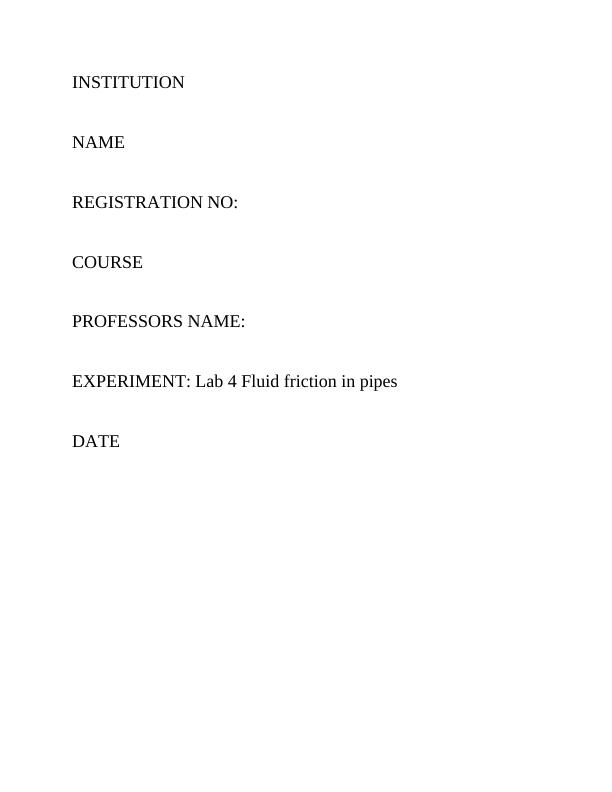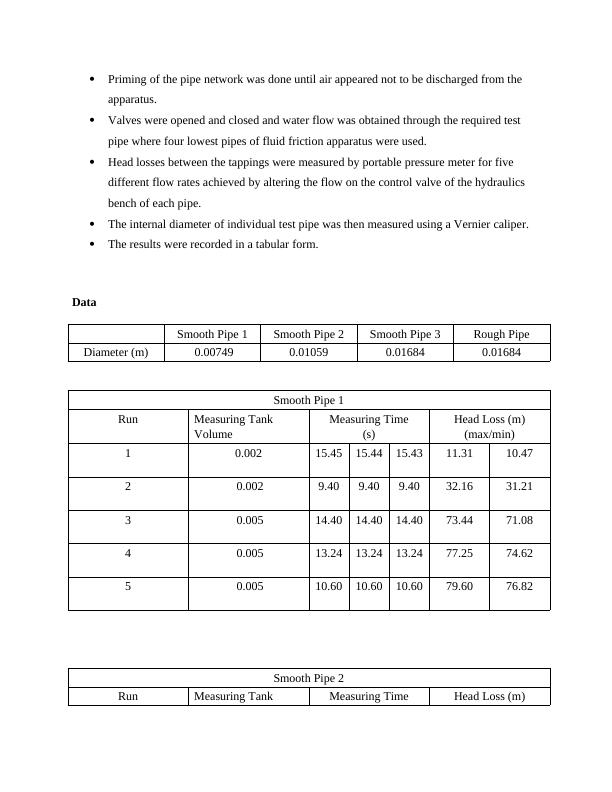Lab 4 Fluid Friction in Pipes
Investigate the relationship between head loss due to fluid friction and velocity for flow of water through both smooth and rough pipes.
16 Pages1907 Words21 Views
Added on 2023-03-17
About This Document
This lab experiment aims to investigate the relationship between head losses and flow velocity in fluid friction in pipes. The experiment involves measuring head losses in both smooth and rough test pipes and comparing the measured and calculated values. The unknown pipe roughness is also determined.
Lab 4 Fluid Friction in Pipes
Investigate the relationship between head loss due to fluid friction and velocity for flow of water through both smooth and rough pipes.
Added on 2023-03-17
ShareRelated Documents
End of preview
Want to access all the pages? Upload your documents or become a member.
Head Loss and Differential Flow Assignment PDF
|43
|7065
|676
Laminar and Turbulent Pipe Flow: Introduction, Method, Results
|19
|3534
|172
Physics Assignment-2 | Task Report | Doc
|7
|1296
|35
Course Instructor Institution Location
|13
|2113
|50
Experiment : Friction in Pipes
|20
|1764
|43
Hydraulic Design for Gravity-Driven Piping System: Calculations, Pipe Selection, and Friction Analysis
|12
|1492
|495




